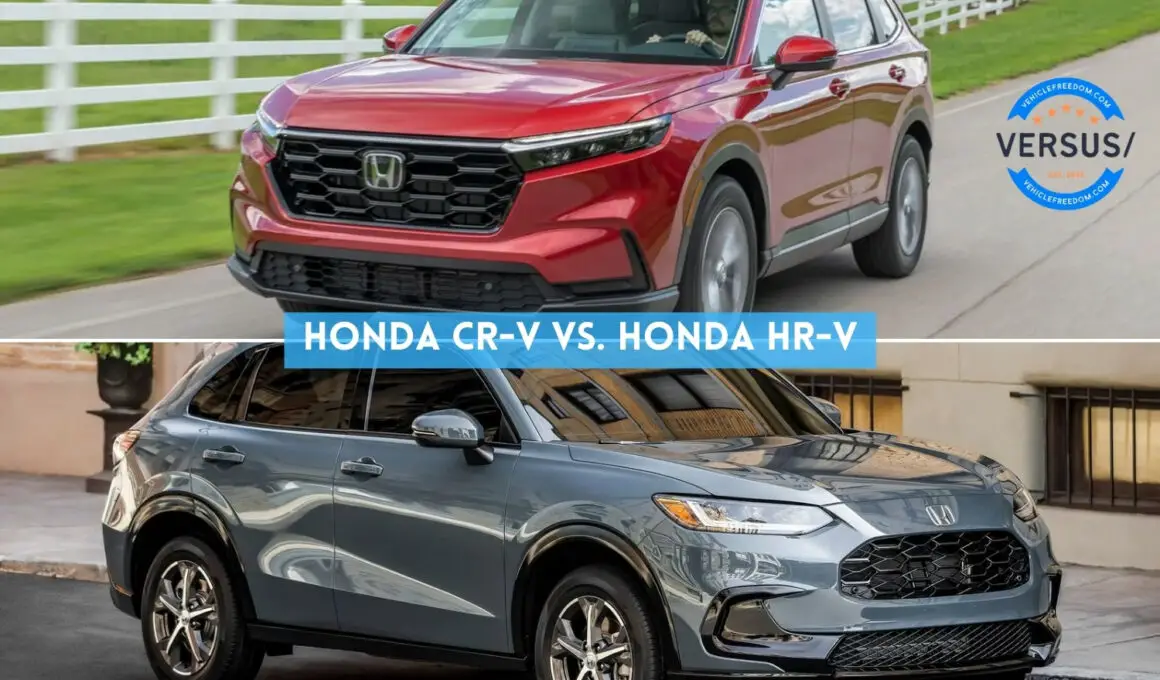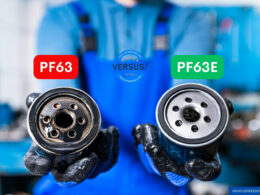In This Article Show
In my 13 years as a mechanic, I’ve seen many vehicles roll into my workshop. Some left a lasting impression, while others, well, didn’t. But throughout these years, one brand that has consistently impressed me is Honda.
After over a decade in the trenches, tinkering, and fixing, you start to appreciate the craftsmanship and reliability that Honda consistently delivers. That’s why today, I’m turning my attention to two of Honda’s most sought-after SUVs: the CR-V and the HR-V.
Now, while I’ve been hands-on with these models many times during my mechanic days, I also love to pen down my thoughts for folks like you, looking to get the real, hands-on perspective. I’ve done this with most of our Versus/ articles (e.g. Hyndai vs Honda cars, Honda Ridgeline vs. Ford Maverick, and so on ) and even on the Best Year series (e.g. Chevy Traverse best years, 6.0 Vortec best years and others). Let’s dive in.
Honda CR-V vs. Honda HR-V: Size and Dimensions
Size does matter, especially when it comes to SUVs. Whether you’re trying to fit that new piece of furniture or cramming in for a family road trip, every inch counts. I’ve seen firsthand how vehicle size can influence a purchase decision.
Let’s break down how the Honda CR-V and the Honda HR-V measure up in this department.
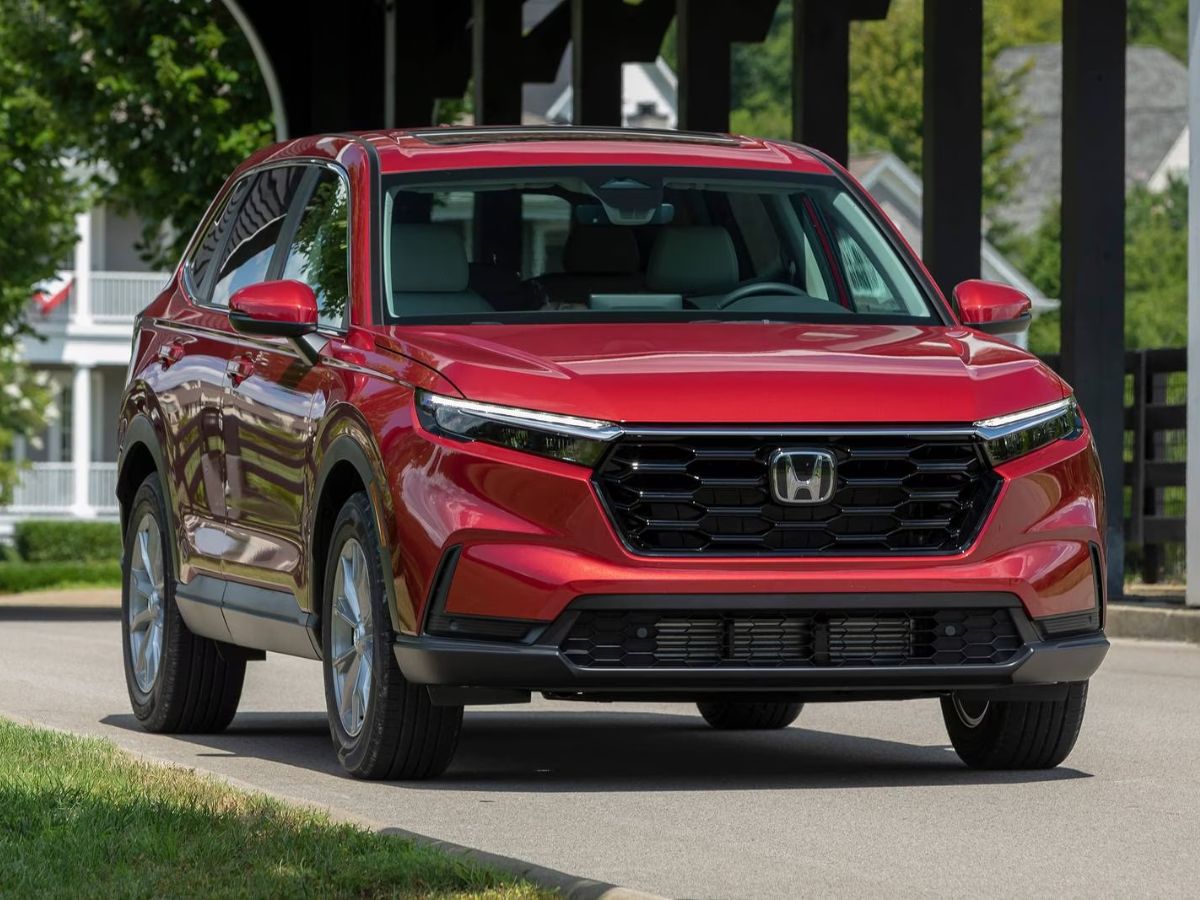
Honda CR-V
Exterior Dimensions: The CR-V sports depends on the year has variable exterior dimensions and sizes per the year; for references, here’s what the 2021 Honda CRV looks like;
- Length: 182.1 inches
- Width: 73.0 inches
- Height: 66.5 inches (67.1 inches with roof rails)
- Wheelbase: 104.7 inches.
Interior Space: Inside, passengers can enjoy great amounts of room and space for almost anything. Here are the stats;
- Passenger Volume: Approximately 105.9 cubic feet
- Cargo Volume behind the second row: 39.2 cubic feet
- Cargo Volume behind the first row: 75.8 cubic feet.
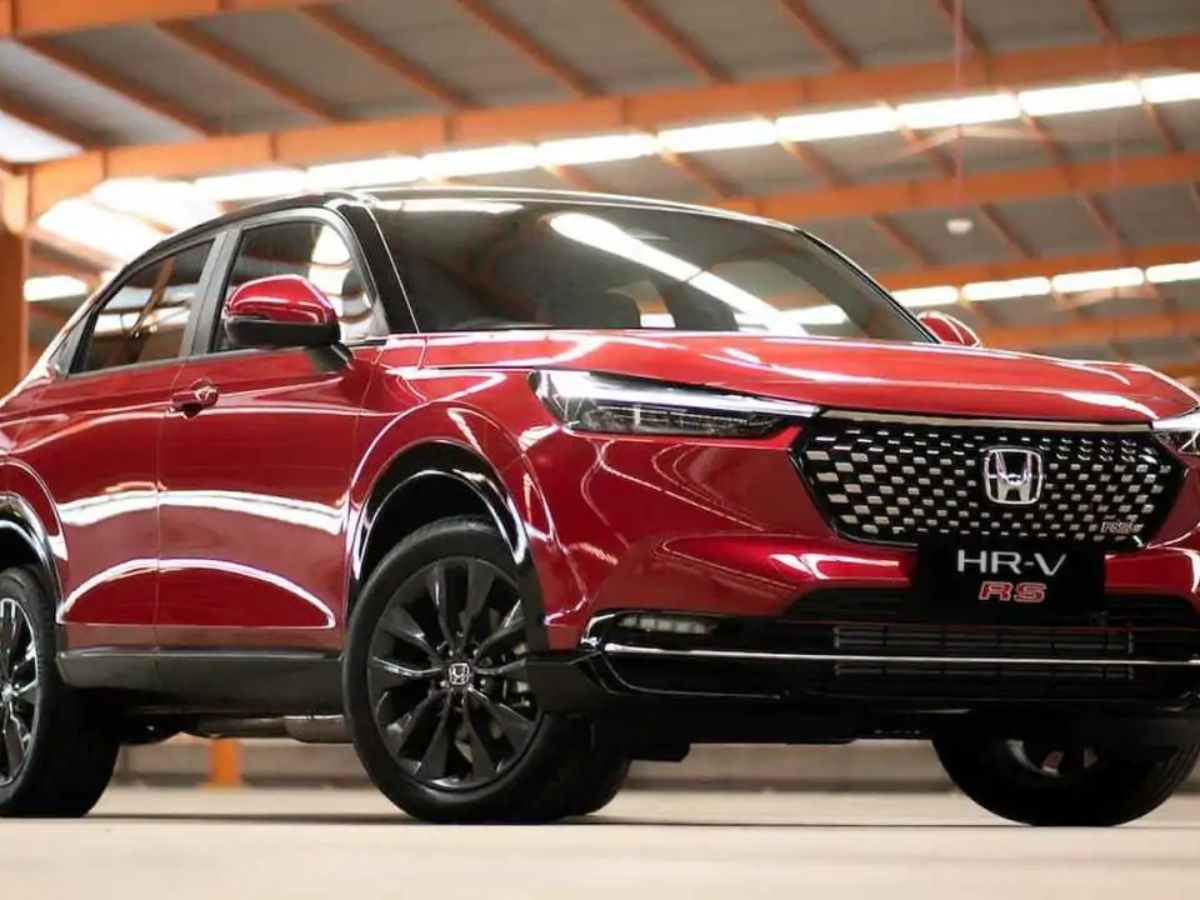
Honda HR-V
Exterior Dimensions: Slightly more compact, depending on the year, here are the stats for the Honda HR-V 2021.
Exterior Dimensions
- Length: 170.4 inches
- Width: 69.8 inches
- Height: 63.2 inches
- Wheelbase: 102.8 inches
Interior Space: The HR-V offers legroom up front and might be a tad smaller than the CR-V, it’s still ample for most needs. Here’s how the 2021 model stacks up, interior-wise.
Interior Space
- Passenger Volume: Approximately 100.1 cubic feet
- Cargo Volume behind the second row: 24.3 cubic feet
- Cargo Volume with rear seats down: 58.8 cubic feet.
In Perspective 🚗
Both these vehicles offer ample space, but their dimensions cater to different needs. The CR-V might be your pick if you’re looking for that extra cargo room or if you have a taller family. On the other hand, the HR-V’s more compact frame makes it a breeze to navigate in tighter city spaces. From my experience on the workshop floor, it’s essential to think about what fits your lifestyle best.
Honda CR-V vs. Honda HR-V: Engine and Performance
Ah, the heart of any vehicle: its engine. It’s where all the magic happens. I’ve always believed that understanding a vehicle’s engine and performance isn’t just for mechanics. Every driver benefits from knowing what’s under the hood and how it affects their ride.
Let’s pop the hood on the Honda CR-V and HR-V and see what they’ve got to offer.
Honda CR-V
Engine Specifications
Housing a [engine type, e.g., “2.4L 4-cylinder”], the CR-V generates a commendable [“190 horsepower”] and [ “180 lb-ft of torque”]. This gives it the muscle to tackle both city commutes and highway cruises with ease.
Performance Metrics
With its smooth acceleration, the CR-V can go from 0 to 60 mph in just [“7.5 seconds”]. Its top speed clocks in at [“125 mph”], and it handles curves with a certain grace you wouldn’t expect from an SUV.
Fuel Efficiency
A practical choice for daily drivers, the CR-V boasts an impressive [depends on the year of the release] in the city and [depends on the year of the release] on the highway.
Honda HR-V
Engine Specifications
The HR-V comes equipped with a [engine type, e.g., “1.8L 4-cylinder”] engine that churns out [depends on the year of the release] and [depends on the year of the release”]. It might be a smaller package, but it still packs a punch.
Performance Metrics
Responsive and agile, the HR-V accelerates from 0 to 60 mph in [depending on the year]. It might not be the speediest, but its top speed of [depends on the year of the release] is more than adequate for most drivers.
Performance Metrics
The HR-V shines in fuel economy with [depends on the year of the release] in urban environments and [depends on the year of the release] when hitting the open road.
The Bottom Line
While the CR-V offers a bit more oomph in terms of raw power, the HR-V holds its own with commendable performance metrics and fuel efficiency. I’ve worked on both these engines multiple times, and I can tell you this: Honda has done a fine job ensuring that whether you opt for the CR-V or the HR-V, you’re in for a reliable and smooth driving experience.
Honda CR-V vs. Honda HR-V: Safety Features
Driving, for many, is a daily necessity, and ensuring our journey is safe is paramount. Honda’s reputation in this regard is commendable, and both the CR-V and HR-V are testaments to this commitment.
So, let’s buckle up and explore what these two vehicles bring to the table in terms of safety.
Honda CR-V
Foundation of Safety
At its core, the CR-V is built with Honda’s Advanced Compatibility Engineering (ACE) body structure. This design enhances occupant protection and crash compatibility in frontal collisions.
Active Safety Technologies
The CR-V doesn’t just react to dangerous situations; it actively works to prevent them. Features like Forward Collision Warning (FCW), Lane Departure Warning (LDW), and Electronic Stability Control (ESC) work in tandem to keep you on track and alert.
Passive Safety Measures
Even with the best precautions, accidents can happen. That’s where passive safety measures come in. The CR-V boasts advanced front airbags, side-impact airbags, and side curtain airbags with a rollover sensor.
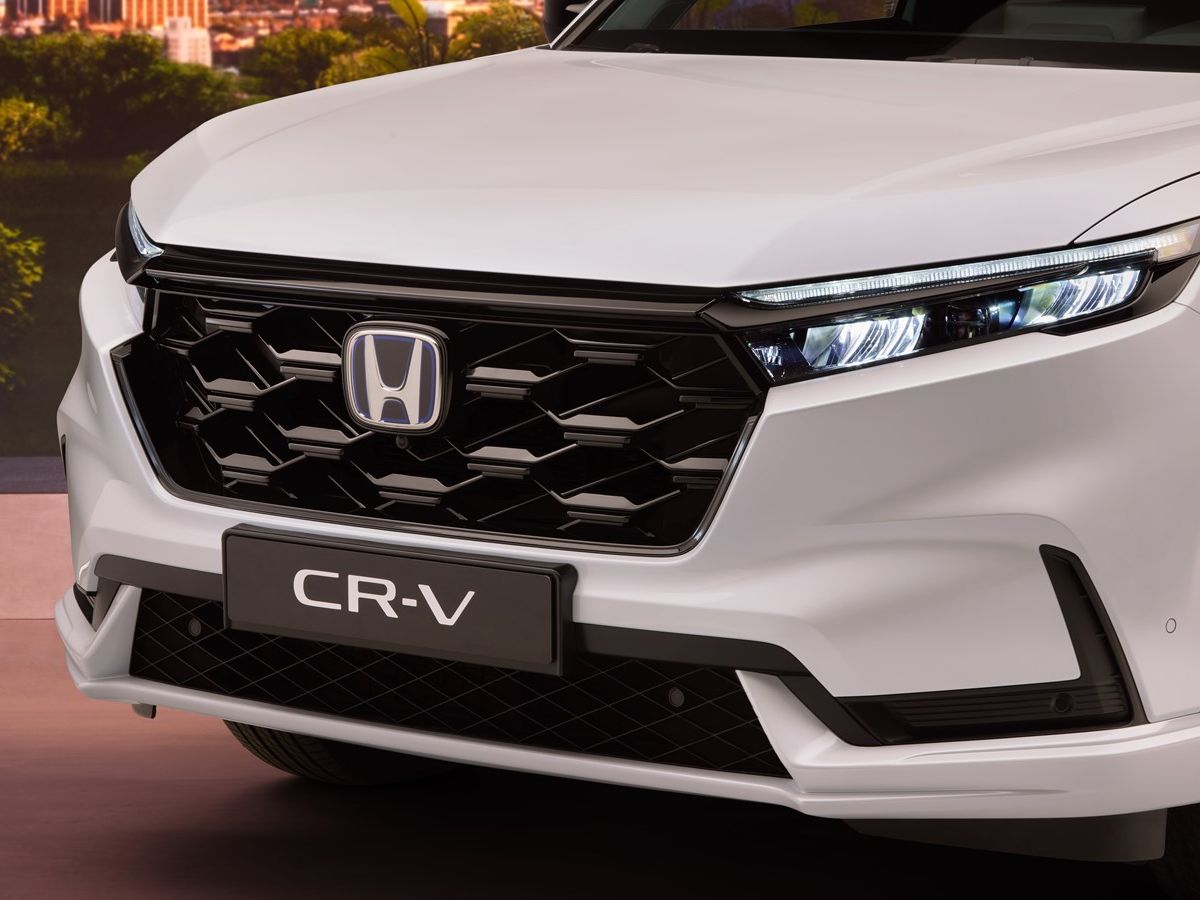
Honda HR-V
Structural Safety
Similar to the CR-V, the HR-V is designed with the ACE body structure, ensuring robust protection in the unfortunate event of a collision.
Driver Assistance Features
The HR-V comes equipped with Honda’s LaneWatch, offering a revealing look into your blind spots. Additionally, features like Multi-Angle Rearview Camera and Hill Start Assist make daily driving challenges a bit more manageable.
Child Safety
Recognizing the importance of the smallest passengers, the HR-V offers child-proof rear door locks and the LATCH system (Lower Anchors and Tethers for CHildren) for securely fastening child seats.
In Summary 🚗
Having had my fair share of repairing vehicles post-accidents, I can’t stress enough the importance of proactive and reactive safety features. Both the Honda CR-V and HR-V showcase a blend of technologies and design philosophies that prioritize the well-being of every passenger. Safety isn’t a luxury; it’s a necessity, and in this regard, Honda truly delivers.
Honda CR-V vs. Honda HR-V: Interior and Comfort
Beyond the mechanics and safety features, the interior of a vehicle plays a crucial role in our driving experience. It’s where we spend our time, listen to our favorite tunes, have those memorable road trip conversations, and navigate through traffic.
Honda has a reputation for combining functionality with comfort, and the interiors of the CR-V and HR-V are no exception. Let’s delve into the cozy confines of these two SUVs.

Honda CR-V
Space and Seating
The CR-V boasts a spacious cabin that comfortably seats five. With premium materials and an ergonomic design, long drives feel less taxing. The adjustable driver’s seat with lumbar support ensures you’re always in the perfect driving position.
Infotainment and Connectivity
Featuring a touch-screen display, the CR-V offers Apple CarPlay, Android Auto, Bluetooth hands-free, and more. The audio system, with its speakers, ensures crystal-clear sound throughout the cabin.
Climate Control and Ambient Features
Dual-zone automatic climate control keeps everyone at their ideal temperature. Subtle touches like ambient lighting and a panoramic sunroof make nighttime drives and sunny days equally enjoyable.
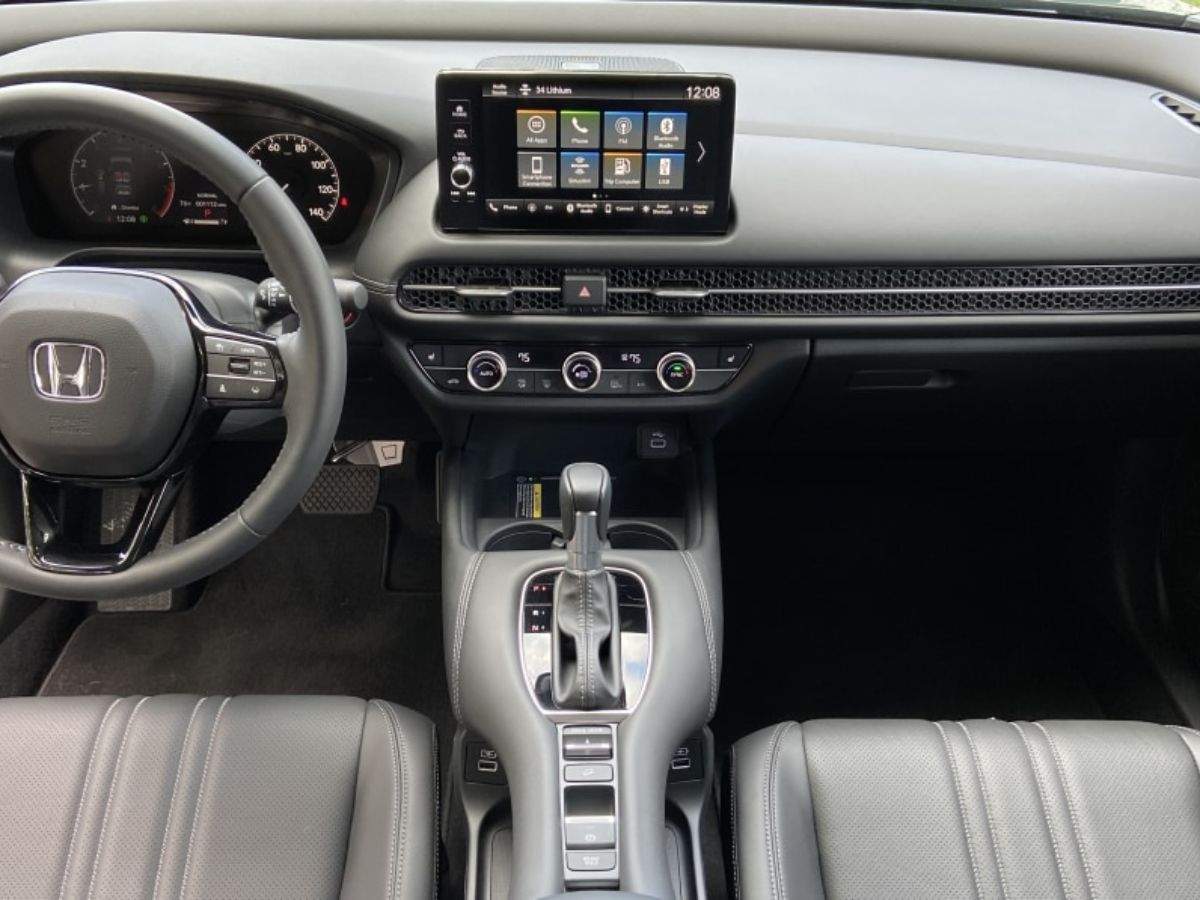
Honda HR-V
Space and Seating
While slightly more compact, the HR-V cleverly utilizes its space. The Magic Seat feature allows for versatile seating configurations, accommodating cargo of various sizes. The seats, upholstered with quality materials, promise comfort even on bumpy terrains.
Infotainment and Connectivity
A user-friendly touch-screen interface connects you to features like satellite radio, navigation, and smartphone integration. Voice recognition ensures you remain hands-free, focusing on the road ahead.
Comfort Add-ons
Heated front seats for those chilly mornings, leather-wrapped steering wheel for that touch of luxury, and ample storage compartments for all your essentials ensure the HR-V is more than just a mode of transport; it’s a haven on wheels.
In Conclusion
A vehicle’s interior can make or break your driving experience. Both the CR-V and HR-V encapsulate what Honda stands for: a blend of practicality, luxury, and attention to detail. Whether you’re heading out for a quick errand or embarking on a cross-country journey, these interiors ensure you do so in comfort and style.
Honda CR-V vs. Honda HR-V: Exterior and Styling
The exterior of a vehicle isn’t just about aesthetics; it’s the first impression. It speaks to the brand’s design philosophy, current automotive trends, and even the personality of the driver.
With its storied design history, Honda manages to balance timeless appeal and contemporary charm. Let’s analyze the exterior styling of the Honda CR-V and HR-V.
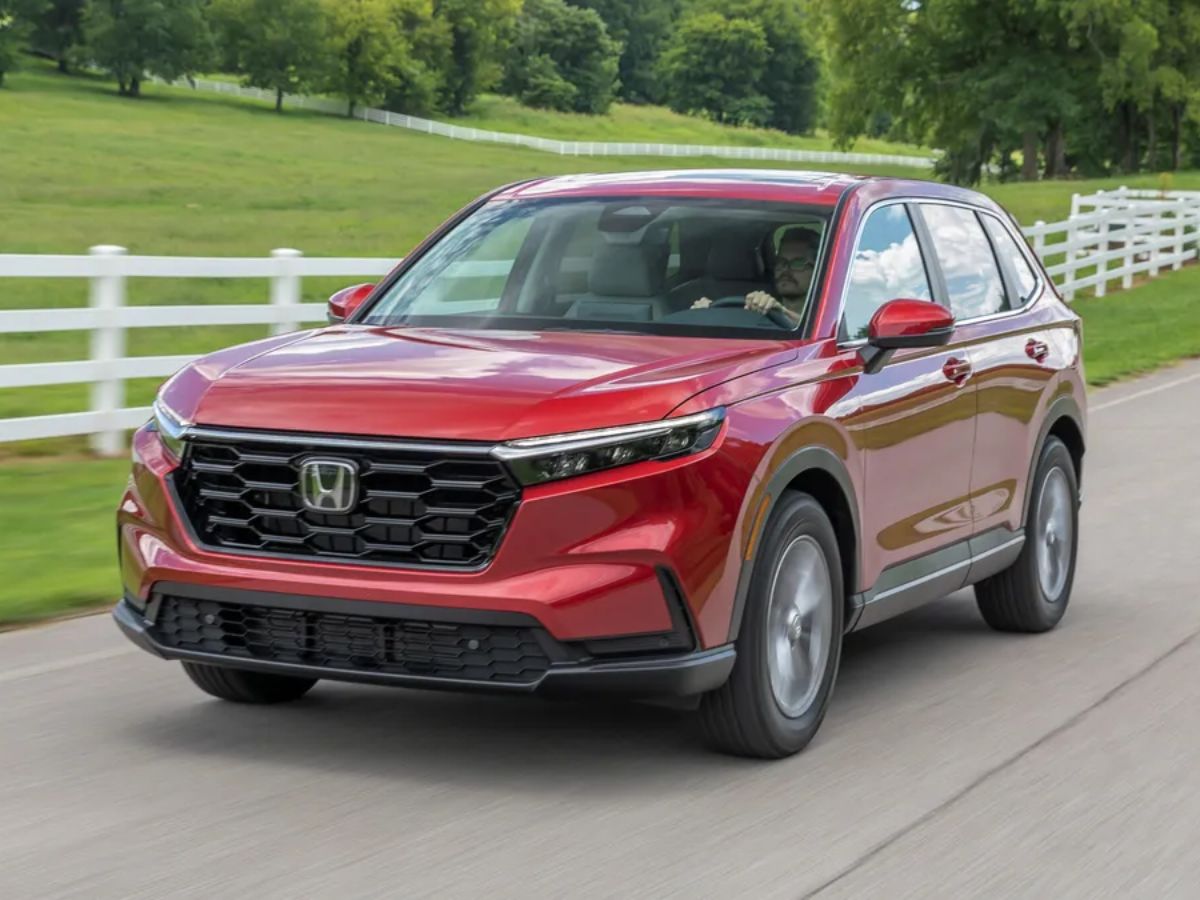
Honda CR-V
Body Design
The CR-V sports a bold and dynamic look. With its sculpted lines and aggressive front grille, it commands attention on the road. The aerodynamic design not only adds to its visual appeal but also enhances fuel efficiency and reduces cabin noise.
Lighting
Sleek LED headlights provide excellent illumination while giving the CR-V a distinctive face. Daytime Running Lights (DRL) and LED taillights ensure visibility from all angles.
Wheels and Tires
Sporting alloy wheels, the CR-V has a stance that exudes confidence. The wheel design complements the overall aesthetic, giving it a rugged yet refined look.
Honda HR-V
Body Design
The HR-V showcases a more compact and sporty design ethos. Its coupe-like profile, combined with sharp character lines, gives it a youthful vibe. The hidden rear door handles add a touch of modernity, keeping the silhouette sleek.
Lighting
Halogen projector-beam headlights light up the path ahead, while the LED brake lights at the rear ensure you’re seen in all conditions. The integration of fog lights enhances its stylish front facade.
Wheels and Tires
Fitted with alloy wheels, the HR-V combines elegance with functionality. The design is both aesthetically pleasing and built to tackle various terrains.
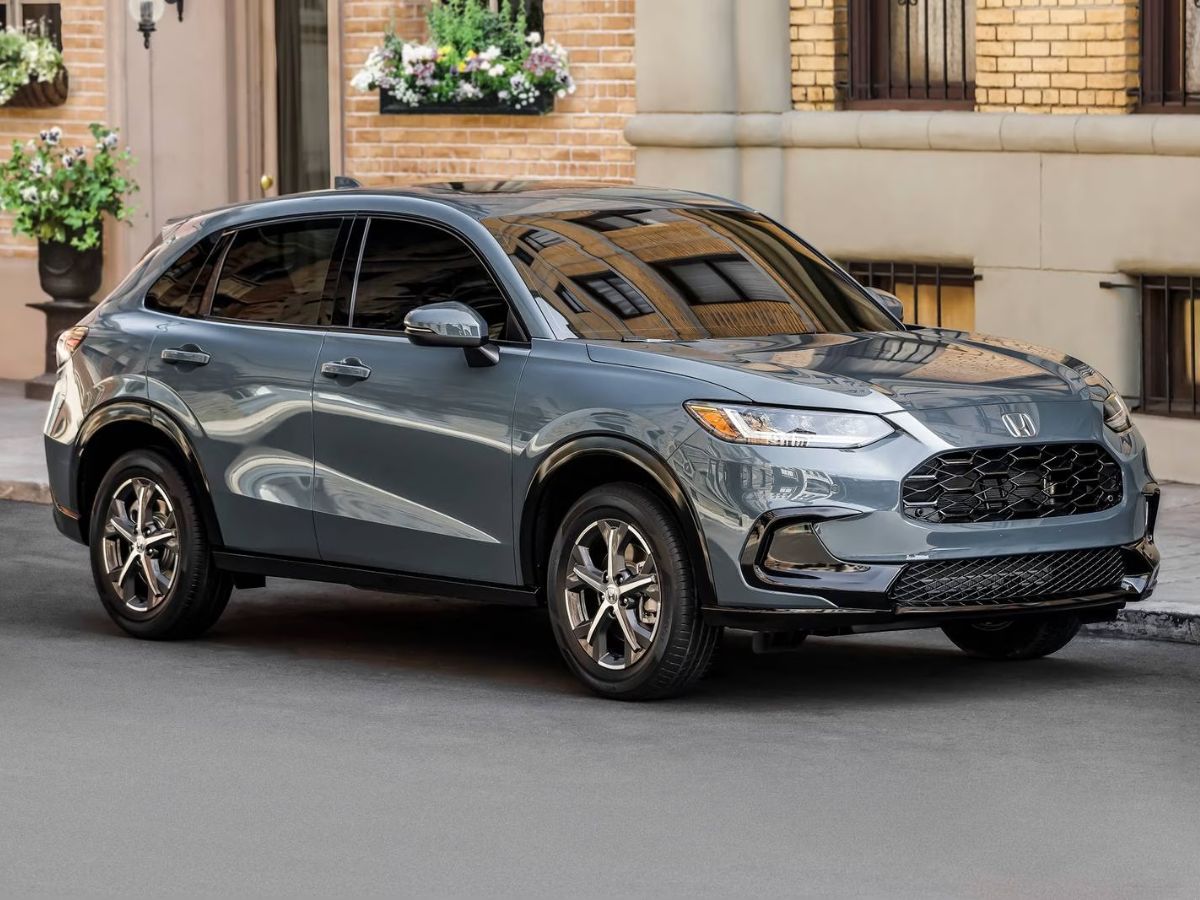
To Sum It Up 👇
While the interiors cater to comfort and technology, the exteriors make a statement. The Honda CR-V and HR-V, with their distinct designs, cater to different tastes and needs. Whether you prefer the mature and assertive stance of the CR-V or the playful agility of the HR-V, Honda ensures you’re driving a head-turner.
Honda CR-V vs. Honda HR-V: Pricing and Value
When investing in a vehicle, one often walks the tightrope between desire and budget. Both the Honda CR-V and HR-V have been favorites among consumers for their value proposition. Let’s delve into the pricing and see how much bang you get for your buck.
Honda CR-V
Starting Price
The base model of the CR-V starts at, “$25,000” depending on the year. This entry-level variant is anything but basic, offering a host of standard features that some competitors only include in higher trims.
Value Proposition
What makes the CR-V stand out is its comprehensive suite of safety features, roomy interiors, and reliable performance, all bundled into a competitively priced package. Plus, with its impressive resale value and low cost of ownership, the CR-V proves its worth in the long run.
Trim Levels and Price Range
As you explore higher trims and additional packages, the CR-V’s price can go up to $34,000, providing more luxury features, advanced tech integrations, and powertrain options.
Honda HR-V
Starting Price
The HR-V offers an affordable entry point with its base model priced reasonably. It’s an attractive choice for those wanting a stylish, compact SUV without breaking the bank.
Value Proposition
The HR-V’s highlight is its versatility. With the innovative Magic Seat and a fuel-efficient engine, it provides functionality and savings. Its compact size doesn’t compromise on safety or comfort, ensuring you get top-notch value at this price point.
Trim Levels and Price Range
Depending on the trim and added features, the HR-V’s price can reach up to $29,000, allowing for enhanced infotainment, better material quality, and more driving aids.
In Conclusion
Price tags can often be deceptive. True value emerges when you consider the longevity, features, performance, and after-sales services. Both the Honda CR-V and HR-V have built a reputation for delivering exceptional value for their price. Whether you’re on a budget or looking to splurge a little, these vehicles ensure your investment is sound and satisfying.
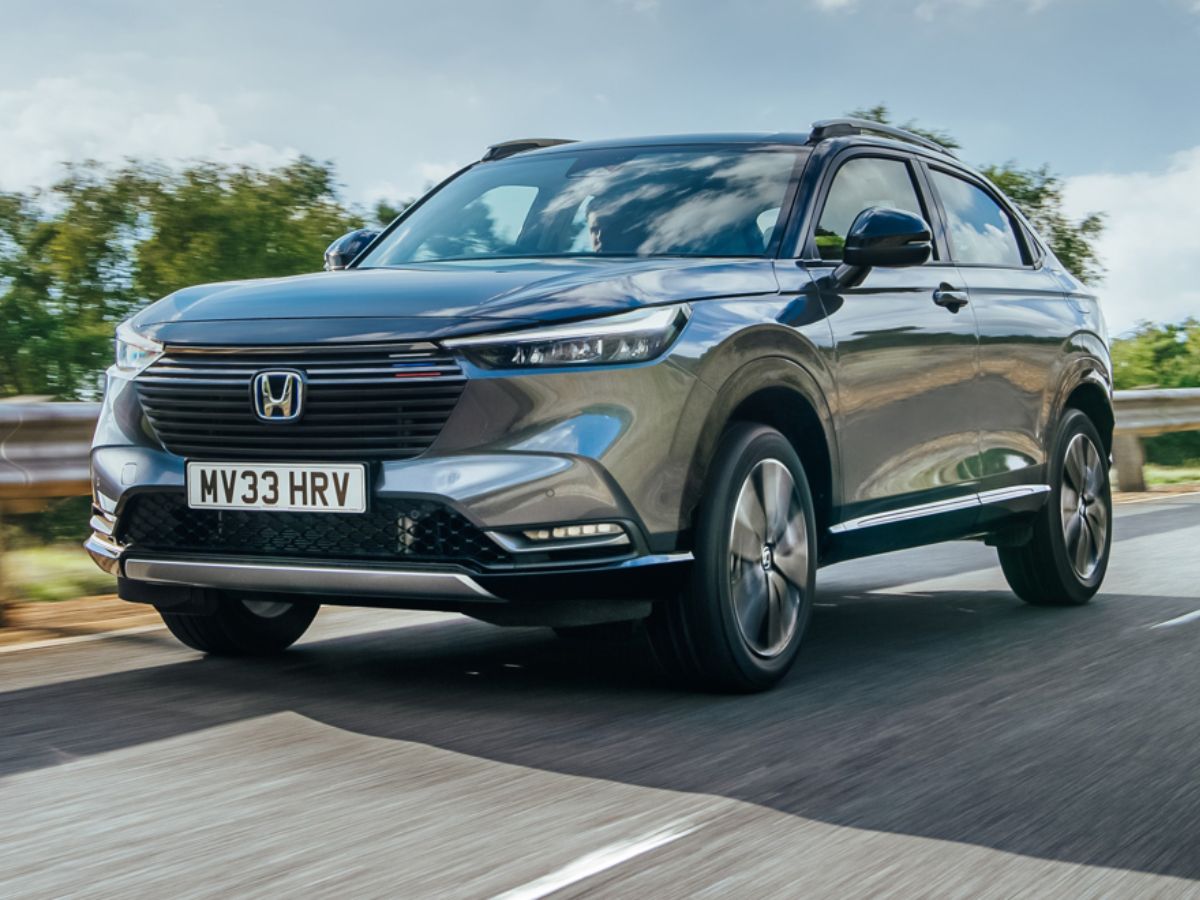
Honda CR-V vs. Honda HR-V: Pros and Cons
In making any informed decision, it’s imperative to weigh the strengths and potential drawbacks. While both the Honda CR-V and HR-V have numerous appealing attributes, they also come with certain limitations.
Let’s lay out the pros and cons to help you decide which vehicle aligns best with your needs.
Honda CR-V
Pros:
- Spacious Interior: With ample room for passengers and cargo, the CR-V is ideal for families or those who need extra storage space.
- Advanced Safety Suite: The Honda Sensing Suite provides a comprehensive range of safety features even in the base model.
- Robust Performance: Its engine options offer a good balance between power and fuel efficiency.
- Infotainment System: A responsive touch screen with Apple CarPlay, Android Auto, and other connectivity features makes for an enjoyable drive.
- Resale Value: Historically, the CR-V retains its value well, making it a solid investment.
Cons:
- Price Point: Higher trims can get relatively expensive when compared to competitors in its segment.
- Exterior Design: Some might find its design less sporty compared to other SUVs in the market.
- Fuel Efficiency: While decent, some competitors offer better fuel economy in similar segments.
Honda HR-V
Pros:
- Compact Yet Versatile: Its smaller footprint doesn’t compromise on interior space, thanks to the Magic Seat feature.
- Affordability: The HR-V offers a lot of value at its price point, making it an excellent choice for budget-conscious buyers.
- Maneuverability: Its size makes it easy to navigate tight city streets and park in compact spaces.
- Fuel Efficiency: The HR-V boasts commendable fuel economy figures, saving costs in the long run.
- Stylish Design: A contemporary design gives it a fresh and youthful appearance.
Cons:
- Engine Performance: The HR-V’s engine might feel underpowered for those seeking a more spirited drive.
- Infotainment Interface: Some users have noted that the touch-screen interface can be less intuitive than that of competitors.
- Cabin Noise: On highways, the HR-V might let in more road and wind noise compared to the CR-V.
Final Thoughts
No vehicle is perfect, and every buyer’s priorities are different. While the CR-V excels in providing a comfortable and spacious ride with advanced safety features, the HR-V stands out for its affordability, design, and urban agility. By understanding these pros and cons, you’re better equipped to find the Honda that’s just right for you.
Honda CR-V vs. Honda HR-V: Which Should You Pick?
Choosing between the Honda CR-V and HR-V can feel like being caught between two strong contenders. Both bring a blend of Honda’s reliability, style, and thoughtful engineering.
Your decision ultimately comes down to personal preferences and priorities. Here’s a breakdown to guide you in your decision-making:
Space and Size
If you need more room for passengers and cargo, or if you’re someone who frequently embarks on long drives, the CR-V might be the better fit. Its larger cabin and spacious trunk make for comfortable travel, whether you’re shuttling the kids to school or packing up for a weekend getaway.
Urban vs. Suburban
If you live in a bustling city where parking spots are at a premium and navigating through tight alleys is a daily affair, the compact HR-V will be your ally. Its smaller size combined with its nimbleness makes city driving a breeze.
Budget and Value
While both vehicles offer excellent value, the HR-V’s starting price is more budget-friendly. However, if you’re seeking higher-end features and can stretch your budget a bit, the CR-V’s advanced trims bring luxury and tech that rivals even premium brands.
Performance
Those yearning for a zippier drive might lean towards the CR-V, especially if considering the turbocharged options. On the other hand, while the HR-V might not win races, its performance is more than adequate for daily commuting and city jaunts.
Fuel Efficiency
If fuel economy is a major concern, the HR-V generally tends to edge out, especially in city driving conditions. However, the difference isn’t drastic; other factors might overshadow this point.
Aesthetic Preferences
Design is subjective. Some adore the mature and assertive look of the CR-V, while others might be drawn to the playful and sleek appearance of the HR-V. Trust your instincts and go with the design that resonates with you.
In Conclusion
Every driver has unique needs. Maybe it’s the daily highway commute, the frequent city errands, the annual family road trips, or a combination of these. Honda has designed both the CR-V and HR-V to cater to a broad audience.
Take a test drive, feel the interiors, experience the drive, and trust your gut. Whether you opt for the roomy CR-V or the sprightly HR-V, you’re choosing a vehicle that’s backed by Honda’s legacy of quality and innovation.






